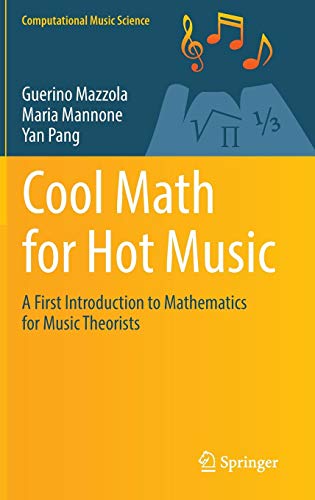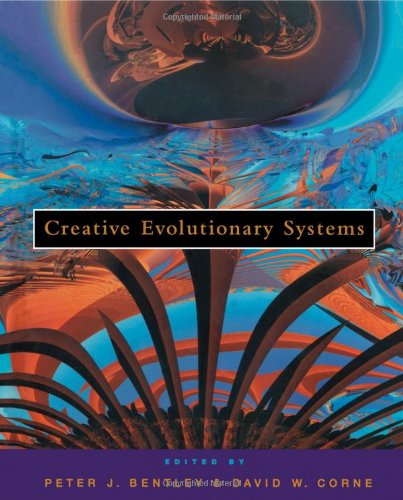Shopping artificial intelligence music has never been easy. You may come many of website, read artificial intelligence music reviews, check the price… It will really makes you headache and tired. Don’t worry! I’ve found ways to make it less painful. Let’s find in below article.
Best artificial intelligence music
Related posts:
Best artificial intelligence music reviews
1. Readings in Music and Artificial Intelligence (Contemporary Music Studies)
Feature
Readings in music and artificial intelligenceDescription
First Published in 2000. Routledge is an imprint of Taylor & Francis, an informa company.2. Understanding Music with AI: Perspectives on Music Cognition
Description
This anthology provides an informative and timely introduction to ongoing research on music as a cognitive process, bringing a new coherence to the emerging science of musical activity. Following the foreword, which is based on a conversation with Marvin Minsky, 26 contributions explore musical composition, analysis, performance, perception, and learning and tutoring. Their goal is to discover how these activities can be interpreted, understood, modeled, and supported through the use of computer programs. Each chapter is put into perspective by the editors, and empirical investigations are framed by a discussion of the nature of cognitive musicology and of epistemological problems of modeling musical action. The contributions, drawn from two international workshops on AI and Music held in 1988 and 1989, are grouped in seven sections. Topics in these sections take up two views of the nature of cognitive musicology (Kugel, Laske), principles of modeling musical activity (Balaban, Bel, Blevis, Glasgow and Jenkins, Courtot, Smoliar), approaches to music composition (Ames and Domino, Laske, Marsella, Riecken), music analysis by synthesis (Cope, Ebcioglu, Maxwell), realtime performance of music (Bel and Kippen, Ohteru and Hashimoto), music perception (Desain and Honing, Jones, Miller and Scarborough, Linster), and learning/tutoring (Baker, Widmer).3. The Artist in the Machine: The World of AI-Powered Creativity (The MIT Press)
Description
An authority on creativity introduces us to AI-powered computers that are creating art, literature, and music that may well surpass the creations of humans.
Today's computers are composing music that sounds more Bach than Bach, turning photographs into paintings in the style of Van Gogh's Starry Night, and even writing screenplays. But are computers truly creativeor are they merely tools to be used by musicians, artists, and writers? In this book, Arthur I. Miller takes us on a tour of creativity in the age of machines.
Miller, an authority on creativity, identifies the key factors essential to the creative process, from the need for introspection to the ability to discover the key problem. He talks to people on the cutting edge of artificial intelligence, encountering computers that mimic the brain and machines that have defeated champions in chess, Jeopardy!, and Go. In the central part of the book, Miller explores the riches of computer-created art, introducing us to artists and computer scientists who have, among much else, unleashed an artificial neural network to create a nightmarish, multi-eyed dog-cat; taught AI to imagine; developed a robot that paints; created algorithms for poetry; and produced the world's first computer-composed musical, Beyond the Fence, staged by Android Lloyd Webber and friends.
But, Miller writes, in order to be truly creative, machines will need to step into the world. He probes the nature of consciousness and speaks to researchers trying to develop emotions and consciousness in computers. Miller argues that computers can already be as creative as humansand someday will surpass us. But this is not a dystopian account; Miller celebrates the creative possibilities of artificial intelligence in art, music, and literature.
4. A Human's Guide to Machine Intelligence: How Algorithms Are Shaping Our Lives and How We Can Stay in Control
Description
A Wharton professor and tech entrepreneur examines how algorithms and artificial intelligence are starting to run every aspect of our lives, and how we can shape the way they impact usThrough the technology embedded in almost every major tech platform and every web-enabled device, algorithms and the artificial intelligence that underlies them make a staggering number of everyday decisions for us, from what products we buy, to where we decide to eat, to how we consume our news, to whom we date, and how we find a job. We've even delegated life-and-death decisions to algorithms--decisions once made by doctors, pilots, and judges. In his new book, Kartik Hosanagar surveys the brave new world of algorithmic decision-making and reveals the potentially dangerous biases they can give rise to as they increasingly run our lives. He makes the compelling case that we need to arm ourselves with a better, deeper, more nuanced understanding of the phenomenon of algorithmic thinking. And he gives us a route in, pointing out that algorithms often think a lot like their creators--that is, like you and me.
Hosanagar draws on his experiences designing algorithms professionally--as well as on history, computer science, and psychology--to explore how algorithms work and why they occasionally go rogue, what drives our trust in them, and the many ramifications of algorithmic decision-making. He examines episodes like Microsoft's chatbot Tay, which was designed to converse on social media like a teenage girl, but instead turned sexist and racist; the fatal accidents of self-driving cars; and even our own common, and often frustrating, experiences on services like Netflix and Amazon. A Human's Guide to Machine Intelligence is an entertaining and provocative look at one of the most important developments of our time and a practical user's guide to this first wave of practical artificial intelligence.
5. Cool Math for Hot Music: A First Introduction to Mathematics for Music Theorists (Computational Music Science)
Description
This textbook is a first introduction to mathematics for music theorists, covering basic topics such as sets and functions, universal properties, numbers and recursion, graphs, groups, rings, matrices and modules, continuity, calculus, and gestures. It approaches these abstract themes in a new way: Every concept or theorem is motivated and illustrated by examples from music theory (such as harmony, counterpoint, tuning), composition (e.g., classical combinatorics, dodecaphonic composition), and gestural performance. Thebook includes many illustrations, and exercises with solutions.
6. Creative Evolutionary Systems (The Morgan Kaufmann Series in Artificial Intelligence)
Feature
Used Book in Good ConditionDescription
The use of evolution for creative problem solving is one of the most exciting and potentially significant areas in computer science today. Evolutionary computation is a way of solving problems, or generating designs, using mechanisms derived from natural evolution. This book concentrates on applying important ideas in evolutionary computation to creative areas, such as art, music, architecture, and design. It shows how human interaction, new representations, and approaches such as open-ended evolution can extend the capabilities of evolutionary computation from optimization of existing solutions to innovation and the generation of entirely new and original solutions.
This book takes a fresh look at creativity, exploring what it is and how the actions of evolution can resemble it. Examples of novel evolved solutions are presented in a variety of creative disciplines. The editors have compiled contributions by leading researchers in each discipline.
If you are a savvy and curious computing professional, a computer-literate artist, musician or designer, or a specialist in evolutionary computation and its applications, you will find this a fascinating survey of the most interesting work being done in the area today.
* Explores the use of evolutionary computation to generate novel creations including contemporary melodies, photo-realistic faces, jazz music in collaboration with a human composer, architectural designs, working electronic circuits, novel aircraft maneuvers, two- and three-dimensional art, and original proteins.
* Presents resulting designs in black-and-white and color illustrations.
* Includes a twin-format audio/CD-ROM with evolved music and hands-on activities for the reader, including evolved images, animations, and source-code related to the text.
* Describes in full the methods used so that readers with sufficient skill and interest can replicate the work and extend it.
* Is written for a general computer science audience, providing coherent and unified treatment across multiple disciplines.
7. Now You're Talking: Human Conversation from the Neanderthals to Artificial Intelligence
Description
Being able to speak is what makes us human.If youve ever felt the shock of listening to a recording of your own voice, you realise how important your voice is to your personal identity. We judge others and whether we trust them not just by their words but by the way they talk: their intonation, their pitch, their accent.
Now Youre Talking explores the full range of our voice how we speak and how we sing; how our vocal anatomy works; what happens when things go wrong; and how technology enables us to imitate and manipulate the human voice. Trevor Cox talks to vocal coaches who help people to develop their new voice after a gender change; to record producers whose use of technology has transformed the singing voice; and to computer scientists who replicate the human voice in their development of artificial intelligence.
Beginning with the Neanderthals, Now Youre Talking takes us all the way to the digital age with the frightening prospect that we may soon hear Unexpected item in the bagging area more frequently than a friendly Hello, how are you? in the street.
8. Philosophy and Theory of Artificial Intelligence 2017 (Studies in Applied Philosophy, Epistemology and Rational Ethics)
Description
This book reports on the results of the third edition of the premier conference in the field of philosophy of artificial intelligence, PT-AI 2017, held on November 4 - 5, 2017 at the University of Leeds, UK. It covers: advanced knowledge on key AI concepts, including complexity, computation, creativity, embodiment, representation and superintelligence; cutting-edge ethical issues, such as the AI impact on human dignity and society, responsibilities and rights of machines, as well as AI threats to humanity and AI safety; and cutting-edge developments in techniques to achieve AI, including machine learning, neural networks, dynamical systems. The book also discusses important applications of AI, including big data analytics, expert systems, cognitive architectures, and robotics. It offers a timely, yet very comprehensive snapshot of what is going on in the field of AI, especially at the interfaces between philosophy, cognitive science, ethics and computing.9. Blood Music
Description
This Hugo and Nebula Award finalist follows present-day events in which the fears concerning the nuclear annihilation of the world subsided after the Cold War and the fear of chemical warfare spilled over into the empty void it left behind. An amazing breakthrough in genetic engineering made by Vergil Ulam is considered too dangerous for further research, but rather than destroy his work, he injects himself with his creation and walks out of his lab, unaware of just how his actions will change the world. Author Greg Bears treatment of the traditional tale of scientific hubris is both suspenseful and a compelling portrait of a new intelligence emerging amongst us, irrevocably changing our world.
10. The Artificial Intelligence Debate: False Starts, Real Foundations
Description
In this broad and provocative collection of original essays on artificial intelligence today, eighteen distinguished scholars set out to explain why and how certain discoveries about the human brain have or have not been used by the AI community, and whether the AI endeavor has increased out, understanding of human cognition. Their exploration focuses on the many controversies and debates that continue to vitalize the field.
Contributors
Jack D. Cowan, Daniel C. Dennett, Hubert L. Dreyfus, Stuart E. Dreyfus, Gerald M. Edelman, W. Daniel Hillis, Anya Hurlbert, John McCarthy, Pamela McCorduck, Seymour Papert, Tomaso Poggio, Hilary Putnam, George N. Reeke Jr, Jacob T. Schwartz, David H. Sharp, Robert Sokolowski, Sherry Turkle, and David L. Waltz












